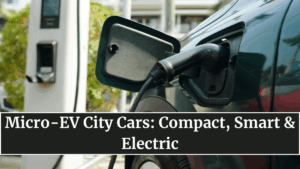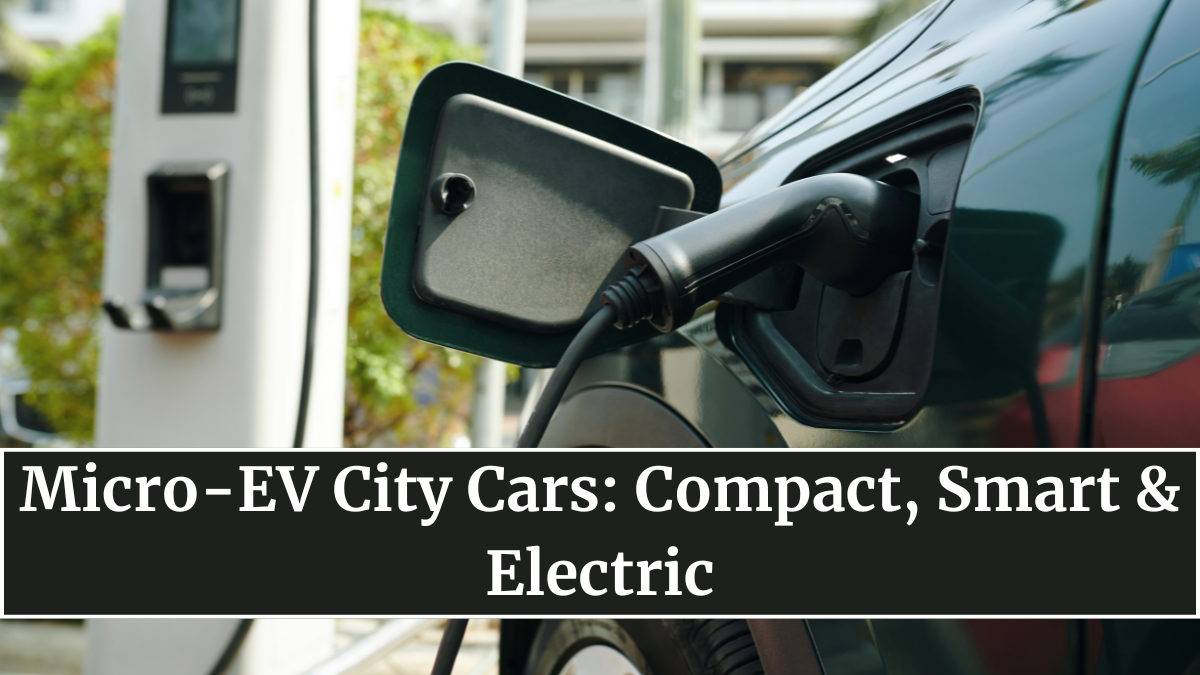In a world of towering SUVs and massive trucks, something small and efficient is making a big comeback — the micro-EV city car. Once seen as quirky or impractical, these tiny electric vehicles are now the symbol of smart urban mobility. With rising fuel prices, limited parking, and growing environmental awareness, the micro-EV city cars USA comeback is rewriting what modern commuting looks like.
Compact, affordable, and surprisingly fun to drive, these vehicles are designed for one thing — to conquer the urban jungle.

What Are Micro-EV City Cars?
Micro-EVs are ultra-compact electric cars, typically seating two to four people, designed for short-range, low-speed urban driving. They prioritize efficiency, affordability, and maneuverability over raw performance.
Unlike traditional cars, micro-EVs often fall under the quadricycle category in regulations, which means they are smaller, lighter, and easier to maintain. With a driving range of 80–150 kilometers on a single charge, they’re ideal for daily city commutes, grocery runs, or quick errands.
Why Micro-EVs Are Making a Comeback
After years of decline, interest in micro-EVs is being revived by major global trends:
-
Urban congestion: City roads are increasingly crowded, and micro-EVs fit where larger cars can’t.
-
Sustainability focus: Smaller battery sizes reduce raw material demand and carbon footprint.
-
Rising fuel and parking costs: Affordable EVs are becoming an economic necessity.
-
Government incentives: Many countries now provide rebates for small, low-emission vehicles.
-
Tech integration: Modern micro-EVs feature touch displays, smartphone connectivity, and AI-powered efficiency systems.
In essence, the micro-EV trend combines practicality with purpose — a compact, connected, and climate-friendly way to move.
Popular Micro-EV Models Leading the Charge
A new wave of manufacturers is embracing the micro-EV revolution with innovative designs and futuristic features:
| Model | Manufacturer | Range | Key Highlight |
|---|---|---|---|
| Citroën Ami | Stellantis (France) | 75 km | Affordable two-seater for daily urban trips |
| Wuling Air EV | SAIC-GM-Wuling (China) | 200 km | Compact yet tech-rich city car for Asia markets |
| Microlino | Micro Mobility Systems (Switzerland) | 177 km | Retro-styled EV inspired by the 1950s bubble cars |
| Smart EQ Fortwo | Mercedes-Benz | 130 km | Premium micro-EV for luxury urban users |
| Eli Zero | Eli Electric (USA) | 160 km | Designed for American cities with compact comfort |
These models prove that small can be smart — balancing range, affordability, and design in one lightweight package.
Benefits of Micro-EVs for Urban Living
The resurgence of micro-EVs is driven by how well they fit the modern city lifestyle:
-
Compact footprint: Easy to park and navigate through traffic.
-
Lower ownership costs: Affordable purchase price and minimal running expenses.
-
Eco-friendly: Zero emissions and small battery production footprint.
-
Ideal for sharing platforms: Perfect for ride-sharing, rental, and subscription models.
-
Energy efficiency: Consumes far less power than larger EVs, optimizing grid usage.
For short, frequent commutes, micro-EVs are often more practical than full-size cars — both environmentally and economically.
Challenges Facing Micro-EV Adoption
While the benefits are clear, micro-EVs still face hurdles in gaining mass adoption:
-
Limited range: Not suitable for long highway drives.
-
Safety perception: Smaller vehicles face skepticism regarding crash protection.
-
Regulatory ambiguity: Varying regional classifications make global rollout difficult.
-
Consumer awareness: Many buyers are still unaware of the category’s potential.
Manufacturers are tackling these issues through better safety standards, AI-assisted driving features, and stronger batteries that extend both range and reliability.
The Future of Urban Mobility
As cities expand and emissions targets tighten, micro-EVs represent the logical next step in urban transportation. By 2030, industry analysts expect over 10% of global EV sales to come from this category, especially in densely populated regions.
Urban planners are also integrating micro-EVs into smart mobility ecosystems — linking them with public transport, shared fleets, and green parking networks. Future models will feature swappable batteries, autonomous capabilities, and solar-assisted charging, making them even more efficient.
The comeback of the micro-EV is not just a design revival — it’s a philosophical shift toward smarter, smaller, and more sustainable living.
FAQs
What is a micro-EV?
A micro-EV is a compact, lightweight electric vehicle built primarily for short-distance urban commuting, offering low cost and high efficiency.
How far can micro-EVs travel on a charge?
Most micro-EVs can travel between 80 and 150 kilometers per charge, depending on the model and driving conditions.
Are micro-EVs safe to drive?
Yes, modern micro-EVs are built with reinforced frames, airbags, and electronic stability systems for improved safety in city conditions.
Are micro-EVs cheaper than regular EVs?
Absolutely. They cost a fraction of traditional EVs, making them ideal for first-time buyers or shared mobility platforms.
What’s the future of micro-EVs?
The future lies in mass urban adoption — where micro-EVs become the primary mobility solution for eco-friendly, connected, and space-efficient cities.
Click here to know more.
